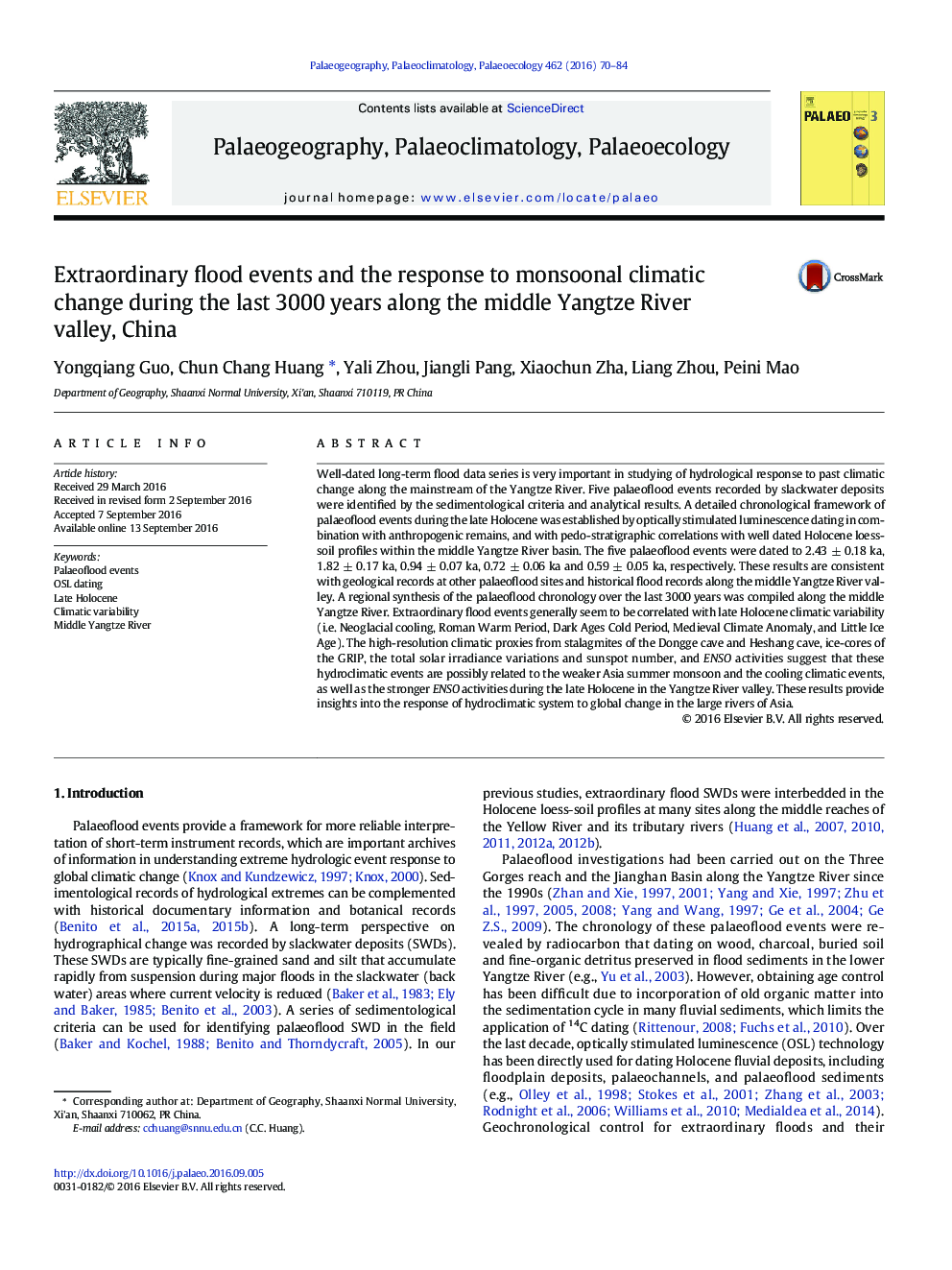| Article ID | Journal | Published Year | Pages | File Type |
|---|---|---|---|---|
| 4465510 | Palaeogeography, Palaeoclimatology, Palaeoecology | 2016 | 15 Pages |
•Extraordinary flood events over the last 3000 years were studied in the Yangtze River.•Five palaeoflood slackwater deposits interbedded Holocene loess-soil were identified.•A detailed chronological framework of late Holocene palaeoflood event was established.•The new optical chronology show good correlation with historical flood in the document.•Extraordinary flood events response to late Holocene climatic changes was presented.
Well-dated long-term flood data series is very important in studying of hydrological response to past climatic change along the mainstream of the Yangtze River. Five palaeoflood events recorded by slackwater deposits were identified by the sedimentological criteria and analytical results. A detailed chronological framework of palaeoflood events during the late Holocene was established by optically stimulated luminescence dating in combination with anthropogenic remains, and with pedo-stratigraphic correlations with well dated Holocene loess-soil profiles within the middle Yangtze River basin. The five palaeoflood events were dated to 2.43 ± 0.18 ka, 1.82 ± 0.17 ka, 0.94 ± 0.07 ka, 0.72 ± 0.06 ka and 0.59 ± 0.05 ka, respectively. These results are consistent with geological records at other palaeoflood sites and historical flood records along the middle Yangtze River valley. A regional synthesis of the palaeoflood chronology over the last 3000 years was compiled along the middle Yangtze River. Extraordinary flood events generally seem to be correlated with late Holocene climatic variability (i.e. Neoglacial cooling, Roman Warm Period, Dark Ages Cold Period, Medieval Climate Anomaly, and Little Ice Age). The high-resolution climatic proxies from stalagmites of the Dongge cave and Heshang cave, ice-cores of the GRIP, the total solar irradiance variations and sunspot number, and ENSO activities suggest that these hydroclimatic events are possibly related to the weaker Asia summer monsoon and the cooling climatic events, as well as the stronger ENSO activities during the late Holocene in the Yangtze River valley. These results provide insights into the response of hydroclimatic system to global change in the large rivers of Asia.
